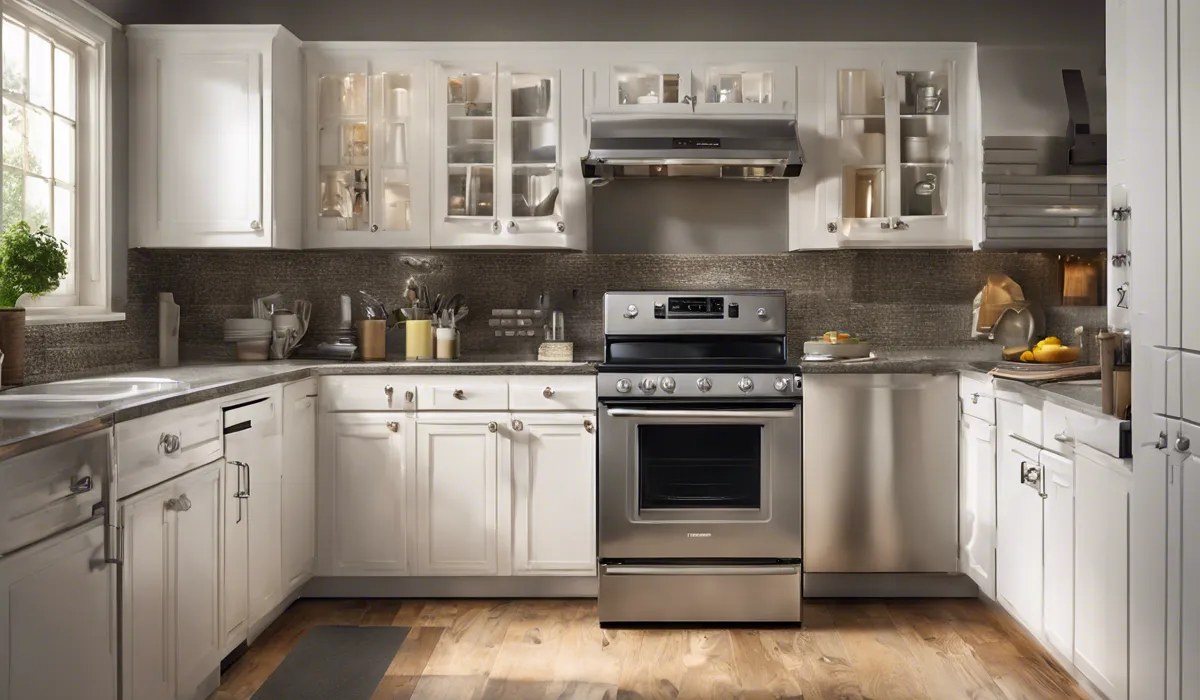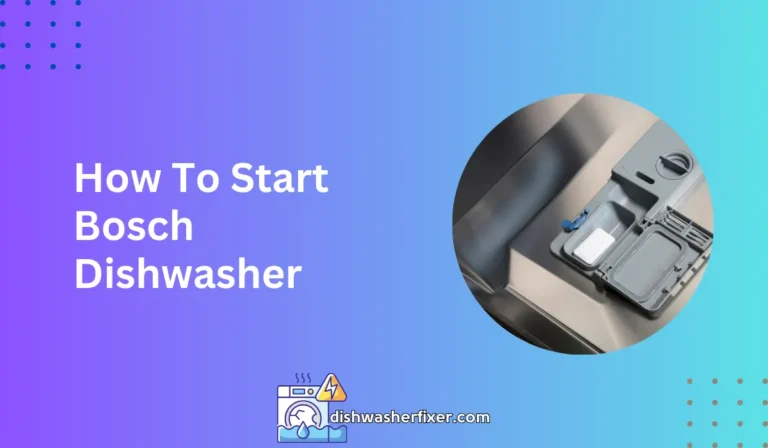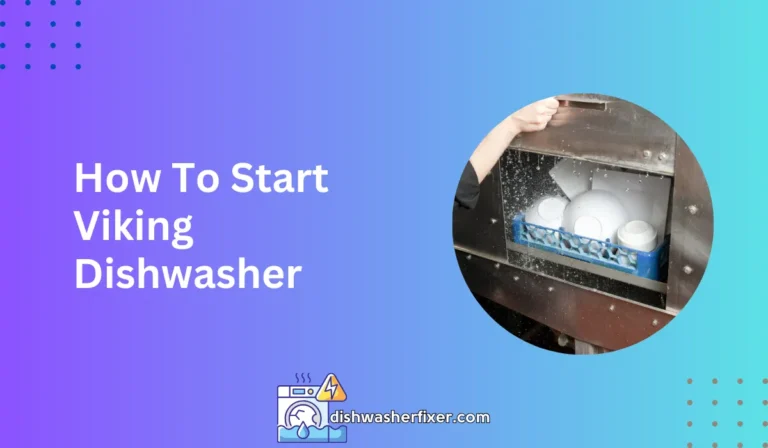How to Install a Dishwasher without a Garbage Disposal?
To install a dishwasher without a garbage disposal, first, prepare the drain connection by installing a dishwasher drain branch tailpiece onto the sink drain. Connect the dishwasher drain hose directly to the tailpiece. Ensure the hose is elevated to prevent backflow. Secure all connections to prevent leaks.
Preparing the Space and Necessary Connections

Assessing and Measuring the Installation Area
Before beginning the installation process, it is crucial to assess the space where the dishwasher will be placed. Start by measuring the width, depth, and height of the opening to ensure the dishwasher will fit.
Remember to consider the space needed for insulation and hoses at the back. If the dimensions do not match the dishwasher’s specifications, adjustments to cabinetry or the opening may be necessary.
It is also essential to check that the flooring under the dishwasher is level and can support the appliance’s weight.
Disconnecting Utilities
For safety, turn off the water supply and power to the kitchen. The water shutoff valve is typically located under the sink.
The power supply can be disconnected by turning off the circuit breaker that controls the kitchen or by unplugging the dishwasher if it is already connected.
Preparing the Plumbing
With the utilities disconnected, remove the existing sink drain pipe to install a dishwasher drain tee. This fitting will provide a connection for the dishwasher’s drain hose.
Make sure to have some towels handy, as there may be residual water in the pipes. When installing the drain tee, ensure a tight fit to prevent leaks, but be cautious not to overtighten and crack the fitting.
Establishing a Water Supply
If a water supply line for the dishwasher is not already in place, you will need to run a new line. This typically involves connecting a water supply line to the hot water valve under the sink.
The materials needed for this task include a water supply line and possibly a dual outlet valve to replace the existing single outlet valve.
Ensuring Proper Drainage
For the dishwasher to drain correctly without a garbage disposal, install a high-loop in the dishwasher drain line.
This loop prevents dirty water from the sink from entering the dishwasher and is a critical step in the installation process. Secure the high loop to the underside of the countertop or cabinet to maintain its position.
Electrical Setup
Lastly, prepare the electrical connections. If your home does not have a dedicated circuit for the dishwasher, you may need to have one installed by a licensed electrician.
A dedicated circuit ensures the dishwasher has enough power and prevents circuit overloads. Once the circuit is in place, prepare the wiring for connection to the dishwasher’s junction box.
Installing the Dishwasher

Unboxing and Inspection
Open the dishwasher packaging carefully and inspect the appliance for any damage or missing parts.
Verify that all the necessary installation components, such as brackets, screws, and hoses, are included. If anything is amiss, contact the manufacturer before proceeding.
Adjusting for Stability
Before sliding the dishwasher into place, adjust the leveling feet. These feet ensure that the dishwasher sits level and stable, which is critical for proper operation.
Use a level to check the appliance from side to side and front to back, making adjustments as necessary.
Positioning the Dishwasher
Carefully slide the dishwasher into the opening, being mindful of the placement of water and electrical lines.
Make sure that the dishwasher fits snugly into the space and that the front is aligned with the cabinetry. The appliance should be level to function correctly and to prevent any potential leaks.
Securing the Appliance
Once the dishwasher is in place, secure it to the underside of the countertop or to the surrounding cabinets using the brackets provided. This step prevents the dishwasher from tipping forward when the door is opened and loaded with dishes.
Connecting the Water Supply
Connect the water supply line to the dishwasher’s 90-degree fitting. Ensure a proper seal by using plumber’s tape on the threads. Hand-tighten the fitting, then give it a final snug with pliers but be careful not to overtighten and damage the fitting.
Routing the Drain Line
Route the dishwasher’s drain line to the newly installed drain tee under the sink. Use hose clamps to secure the connections and check for kinks in the hose that could impede water flow. Remember to maintain the high-loop configuration to prevent backflow.
Electrical Connection
Connect the electrical wiring to the dishwasher’s junction box, following the manufacturer’s instructions.
Typically, this involves connecting the black (hot), white (neutral), and green (ground) wires. Use wire nuts to secure the connections and ensure that no bare wires are exposed.
Finalizing the Installation and Testing

Checking for Leaks and Proper Installation
Before restoring utilities, double-check all water and electrical connections for tightness and correct installation. Make sure clamps are secure, and wires are correctly attached and insulated.
Restoring Utilities and Initial Test
Turn the water supply and power back on. Watch for any immediate signs of leaks or electrical issues.
Run the dishwasher through a full cycle without dishes to ensure that it fills, washes, and drains correctly. Monitor the appliance throughout the cycle for any malfunctions or leaks.
Leak Inspection During Operation
While the dishwasher is running, inspect the connections under the sink for leaks. Pay particular attention to the drain tee and water supply fitting. If you find any moisture, turn off the appliance and tighten the connections as needed.
Finishing Touches
Once the dishwasher has completed a cycle without issues, attach the kick plate or toe kick to the front bottom of the dishwasher.
This component covers the leveling feet and helps to insulate the dishwasher, reducing noise. Align and secure the kick plate according to the manufacturer’s directions.
Door Alignment and Functionality Check
Ensure the dishwasher door aligns correctly with the cabinetry and that it opens and closes smoothly.
The door should latch properly to prevent water from leaking during operation. Finally, test all the dishwasher’s functions and settings to confirm that everything is working as expected.
FAQs About Installing a Dishwasher Without a Garbage Disposal
Can I install a dishwasher if I don’t have a garbage disposal?
Yes, you can install a dishwasher without a garbage disposal by connecting the dishwasher drain hose directly to a dishwasher drain branch tailpiece on the sink drain.
What is a dishwasher drain branch tailpiece?
A dishwasher drain branch tailpiece is a fitting installed onto the sink drain that provides a connection point for the dishwasher drain hose.
How do I prevent backflow into my dishwasher?
Prevent backflow by ensuring the dishwasher drain hose is elevated before it connects to the drain branch tailpiece.
Do I need any special tools to connect the dishwasher to the drain?
Generally, basic tools such as screwdrivers and pliers are sufficient, but it’s essential to secure all connections to prevent leaks, which may require additional tools or supplies like hose clamps.
What should I check after installing the dishwasher to ensure it’s working correctly?
After installation, check for leaks at all connection points when the dishwasher is running, and verify that water is not backflowing into the dishwasher from the sink drain.
Final Thoughts
Installing a dishwasher without a garbage disposal involves preparing a drain connection by attaching a dishwasher drain branch tailpiece to the sink drain.
The dishwasher’s drain hose should be connected directly to this tailpiece, with an elevated loop to prevent backflow. It’s essential to secure all connections tightly to avoid any potential leaks.





